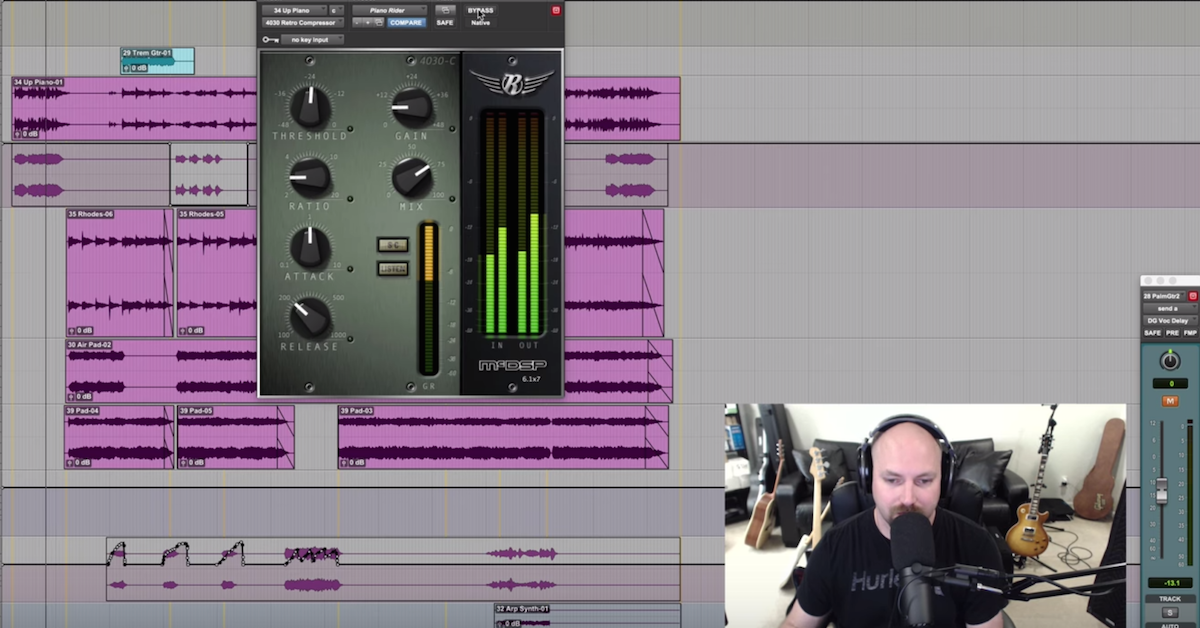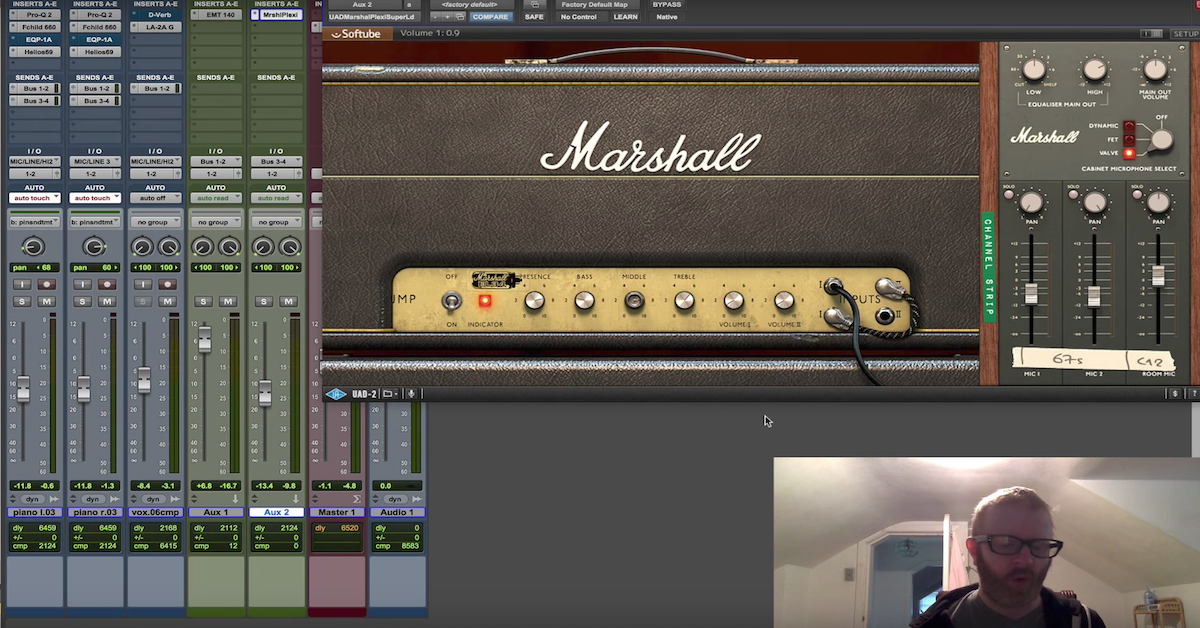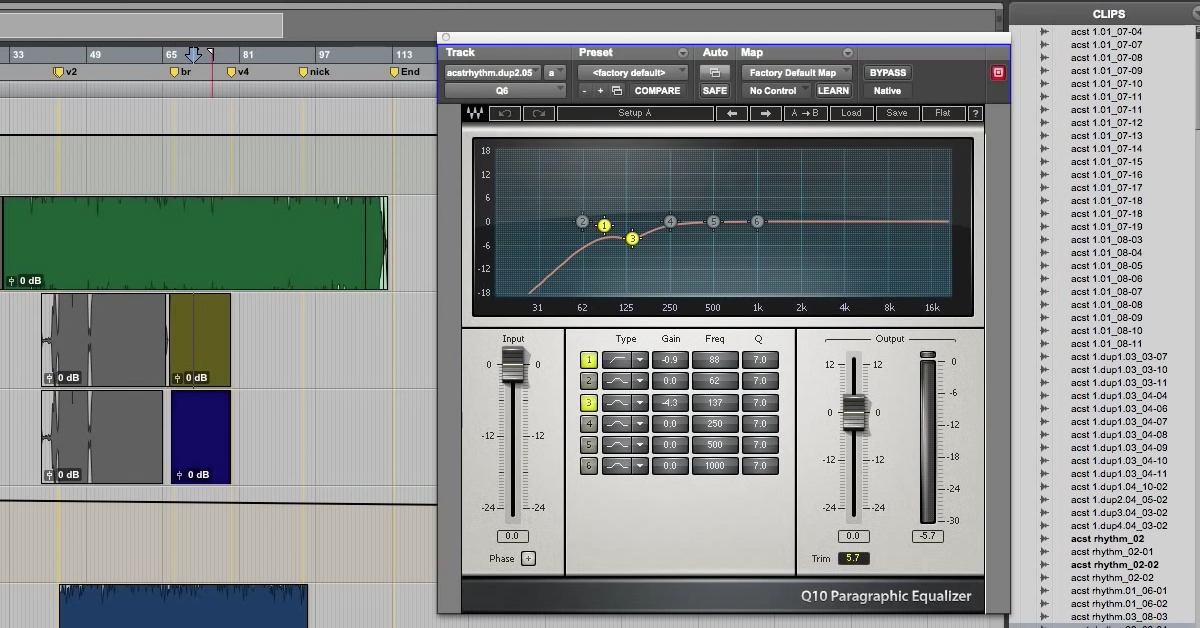7 Ways to Get More Sounds Out of an Acoustic Piano
Article Content
The simple mechanics of felt hammers hitting metal strings give the piano a beautiful and unparalleled natural sound. But what if a natural sound isn’t what you’re looking for?
Typically, when we want something to sound a different, we’ll use a piece of hardware or a plugin to change the sound. But what if, instead of pulling up a plugin to change the sound of an acoustic piano, you changed the sound at the source instead?
Pianists and composers have thought about this before. People have been messing around with their instruments for hundreds of years, and have come up with some pretty cool ways to modify the sound of a piano. Here are a few of the most popular methods.
1. The Tack Piano
If you want your piano to be brighter and more percussive, the tack piano is your go-to method. Many listeners will instantly recognize the sound of a tack piano in songs like Queen’s “Killer Queen” and Fleetwood Mac’s “Don’t Stop”. It sounds a bit like a cross between a harpsichord and a piano, but it’s much louder than a harpsichord and has a stronger attack than a piano.
A traditional tack piano is created by inserting tacks into the piano’s hammers, so that the tacks strike the strings rather than the felt on the hammers. Preparing a piano this way can be dangerous to the piano, however, so many pianists opt instead to attach a strip of felt with small pieces of metal attached to it, called a “mandolin rail,” between the hammers and the strings of an upright piano to create a similar sound to the tack piano.
A variation on this method is to partially detune a tack or mandolin rail piano to create the “honky-tonk” sound that you hear in songs like Emerson, Lake & Palmer’s “Jeremy Bender”.
2. The Felt Piano
On the other end of the sonic spectrum from the tack piano is the felt piano. This method is really just an extension of the dampening method that already exists within most upright pianos: When you use the soft pedal on an upright piano, the pedal triggers a mechanism that places a strip of felt between the hammers and the strings to partially mute the instrument’s sound.
Instead of limiting this sound to the upright piano, contemporary pianists like Olafur Arnalds and Nils Frahm have popularized a similar method using grand pianos – by taping pieces of felt, or even strips of t-shirt material, on top of the grand piano’s strings, they create a dampened effect, while still taking advantage the fuller sound of a grand piano.
3. The Screw Piano
If you look at the score for Estonian composer Arvo Pärt’s 1977 piece “Tabula Rasa,” you’ll find instructions on how to insert metal screws between the strings of a grand piano: “Metal screws of 5 or 6 mm diameter should be used… [strings] should be carefully separated by a felt wedge before the screws are inserted or removed, in order to avoid damage to the strings,” and so on.
This is not something most people would imagine doing to a grand piano, but the result, if the preparation is done properly, is actually quite pleasing. The screws between the strings create a range of interesting overtones, which give the piano a bell-like quality.
This might not be a method you’d want to use on a Steinway concert grand (although Pärt’s score recommends that “as large a concert grand should be used as possible,”) but if you’re feeling adventurous, some carefully placed screws can be a fun way to extend the sonic palette of an old piano.
4. The Percussive Piano
While each of the methods on this list would qualify as “prepared piano” techniques, what most people think of when they think about a prepared piano is a percussive piano, similar to what John Cage used in the 1940s and 50s.
Although Cage was not the first composer to use a prepared piano, he is widely credited with popularizing the technique. His methods usually involved placing objects like pieces of wood or weather stripping on the strings of the piano to create percussive sounds.
Today, German pianist Hauschka carries on Cage’s prepared piano tradition. Hauschka uses all sorts of objects from bottle caps to ping-pong balls to create all sorts of unique sounds that many people would never imagine hearing from a piano.
5. The Hammered Piano
Pianos already use hammer action, but if you want a different type of hammered sound, you can always find different ways to hammer the strings.
If you listen to the song “Broken Mirror” by Medeski, Martin and Wood, you’ll hear pianist John Medeski hammering the piano’s strings with a flathead screwdriver while holding down the sustain pedal for the song’s opening melody. Later you’ll hear him “strumming” the strings with the screwdriver, while muting certain strings with his other hand to make the piano sound like a zither or an auto-harp.
6. The Plucked Piano
There are lots of ways to make piano strings resonate, and hammering them isn’t the only way to do it.
Plucking piano strings with a guitar pick, for example, will create a similar sound to the hammered sound mentioned above. Some contemporary piano compositions even call for fingerpicks to be worn on the pianist’s hand to be used for plucking the piano strings.
Using a guitar pick is also a good way to experiment with piano harmonics – by pressing down on a piano string with a guitar pick while simultaneously playing that note, you can create harmonic sounds similar to what you’d get from playing natural harmonics on a guitar. Vary the pressure of the pick, and you’ll vary the sound of the harmonics.
7. The Bowed Piano
Bowing the strings of a grand piano isn’t an easy task, but that’s what composer C. Curtis-Smith set out to do in the early 1970s.
He found that you can use “loose bows made of strands of [nylon] fishline,” threaded through the piano’s strings, to create a bowed, resonant sound, similar to the sound of a string ensemble but with more overtones. Composer Stephen Scott picked up on this sound as well, and even founded the Bowed Piano ensemble, which performs pieces specifically composed for bowed piano.
If you’re after an orchestral sting sound, but you’re looking for something different (and maybe a bit more off-kilter) than what your sample library has to offer, then bowed piano strings might be the sound you’re looking for.
Conclusion
You should be warned of course that some of these techniques will probably make your piano go out of tune faster than it normally would. There’s also the potential to cause damage by getting carried away with piano preparations, plus there’s the endless frustration caused by continually dropping things down the back of the piano while you’re trying to attach them to the strings. On top of that, there’s the possibility that some of these techniques won’t even sound very good when you first try them.
Now with that disclaimer out of the way, you should also know that sometimes you have to take some risks if you want to have fun and make cool new sounds, and that trying new things is probably also good for your health.
If you’re not sure about trying out some of these extended techniques, just think of them as plugins you insert into an acoustic instrument, but instead of buying a plugin, all you need are a few households objects and a bit of ingenuity to completely change the instrument’s sound.
These methods may not be for everybody, but if you’re looking for a little variety in the studio, there’s nothing like messing up the sound of a perfectly good instrument to add a little spice to your life.





